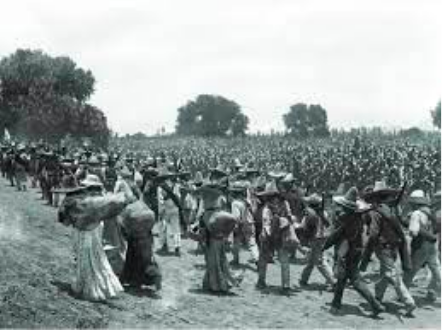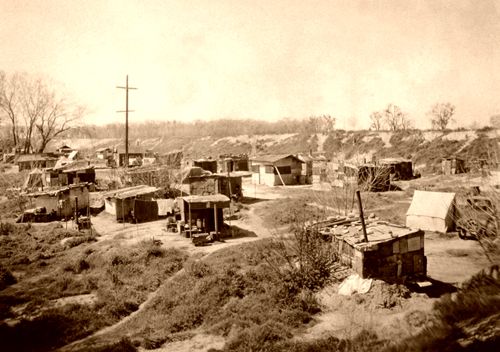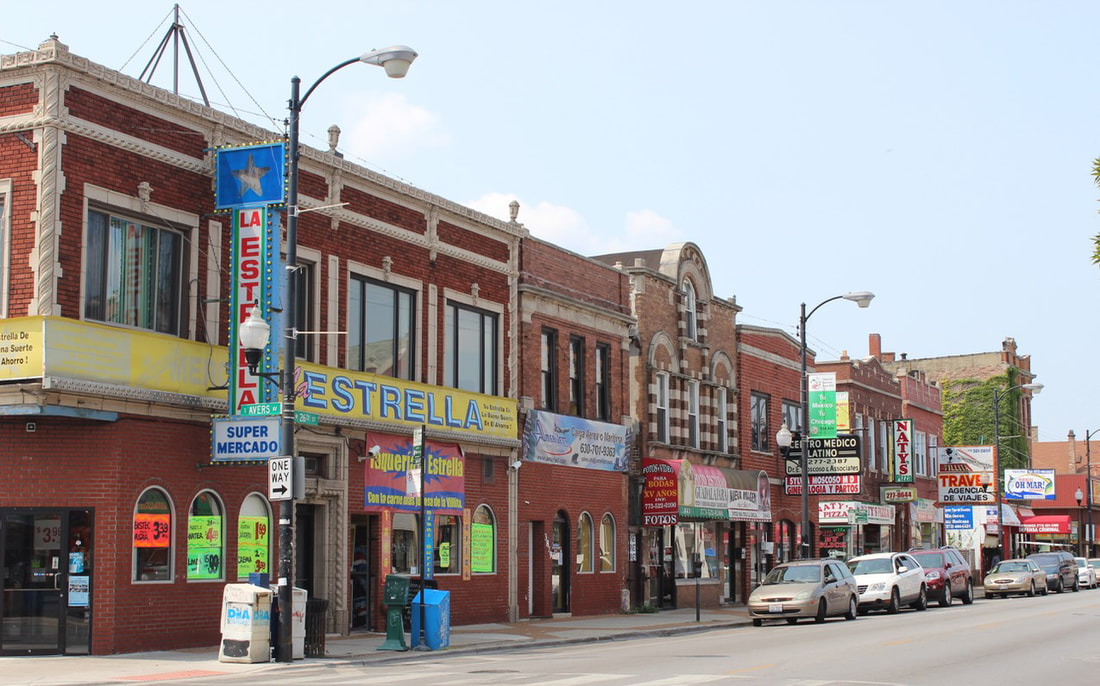|
Mexican soldiers are seen fighting in the Mexican Revolution. The Mexican Revolution, which occurred from 1910-1920, resulted in millions of Mexican immigrants coming to the U.S. who were escaping violence and poverty.
|
Mexican citizens marching in protest against the dictatorship in Mexico. These boycotts led to the Mexican Revolution.
|
During the Great Depression, barrios sprung up to house Mexican immigrants. These were comprised of Mexicans and Mexican Americans, also known as pochos and chicanos.
|
The Banana Wars were a series of violent coups, revolutions, and military takeovers supported by the United States and powerful fruit companies, specifically the United Fruit Company, that took place from 1898 to 1934. The United Fruit Company was established in 1899 and became a dominant corporation, with more fruit growing plantations in the U.S. than any other business. At the time, the U.S. relied on big companies, such as United Fruit, to prevent other regions from growing bigger plantations than themselves. Whenever the U.S. faced leaders or governments that threatened their profits, American companies were able to apply political pressure in order to force these countries to give the U.S. what they wanted. In extreme cases, the U.S. would send soldiers to protect American commercial interests. The CIA even overthrew the democratic leaders in Guatemala to put a republican dictator in charge, solely because he was friendly to the United Fruit Company. These “wars” worsened conditions in Latin American countries.
|
An example of a modern barrio, which is a neighborhood of Spanish-speaking people or refugees. There were and still are different barrios all throughout Los Angeles.
|
This is a comparison of the two types of bananas the United Fruit Company produced. Gros Michel were popular because of their bulbous body, but Cavendish are the most commonly sold bananas at supermarkets today.
|
Due to the terrible living conditions in Mexico, mostly caused by the violent Mexican Revolution, many Mexican citizens fled to the U.S. in hopes of finding a better life. The immigrants, some uneducated, found work in factories and farms, with low pay and laborious work. Many of the workers lived in barrios. Barrios are Spanish-speaking neighborhoods consisting of chicanos (people born and raised in Mexico) and pochos (people with Mexican heritage born in America). These neighborhoods were popping up all over the country, easing the immigrants’ transition from Mexico to America. Soon enough, white Anglos were worried that Los Angeles’ quick growth was drawing in too many immigrants and minorities. By 1930, the U.S Census counted 1.42 million people of Mexican ancestry. Government officials thought that these numbers were too high and started a “repatriation” program. As a result, the U.S. deported many of the immigrants and their children to Mexico.






